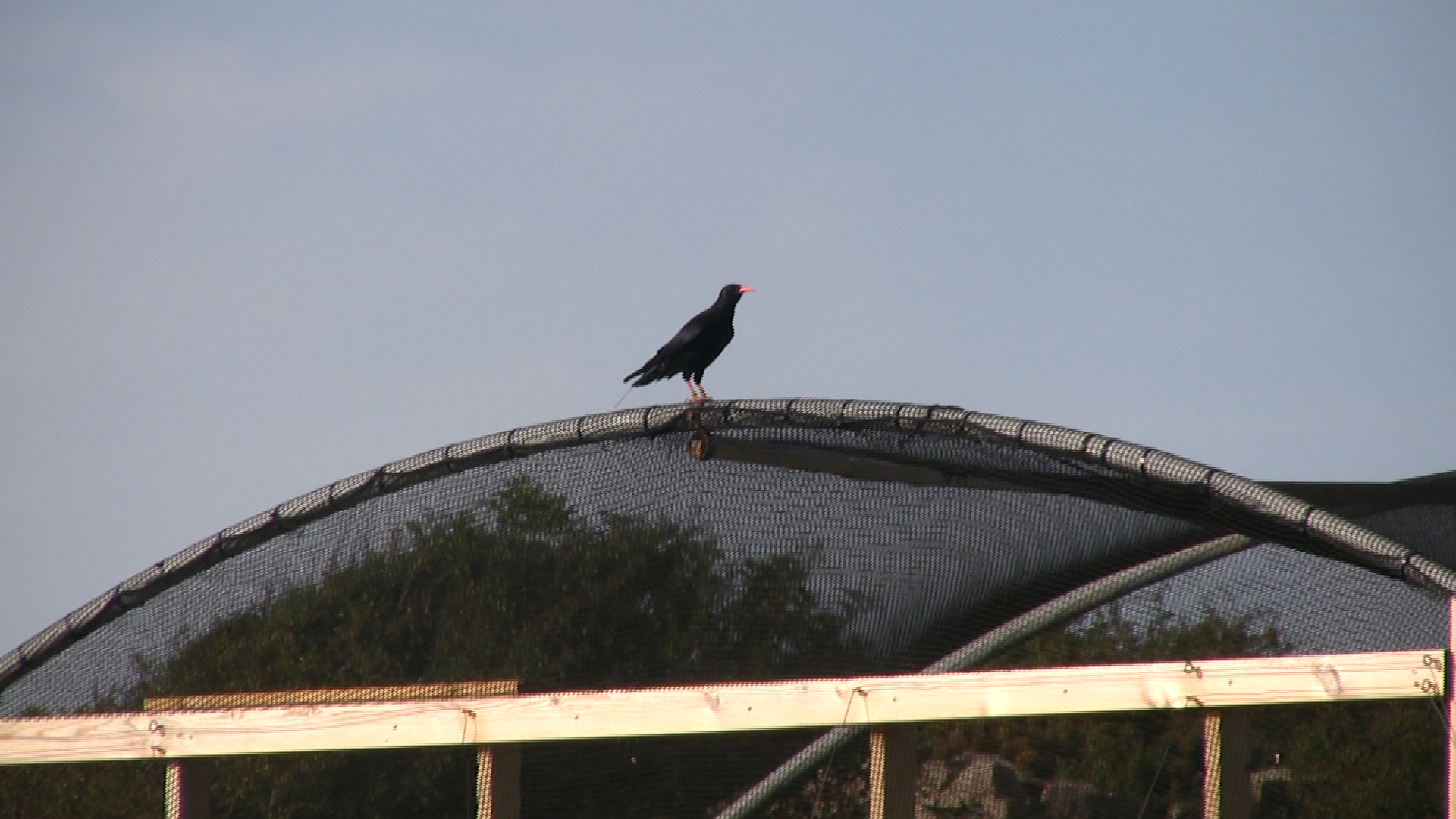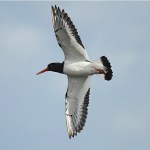Well, Wednesday afternoon (28th August) was rather exciting/stressful. We planned to open the shutters at the Sorel aviary to the outside world for 30 minutes at 1700. This first step should be considered part of the training for the birds rather than an ‘official’ release. The idea is that the birds get a few minutes outside each day with the access time lengthened slowly until the birds are left completely at liberty. While the birds may or may not choose to go out of the aviary they will be called in again after 30 minutes and shut inside again.
This soft-release process will be repeated daily until late-September when the birds may remain at liberty unless specifically called back in (they will be fed daily and watched closely for the foreseeable future whatever happens). The first opening of the hatches was not made into an event, mostly because something could have gone wrong or, much more likely, they would not actually go out at all on the first day.
Release Day 1 (28th August)

 The shutters were duly opened at 1700 and we had 30 minutes of ‘freedom’ and three birds wandered outside. One chough flew round a bit but not far from aviary and came in when called. Not a bad start! The birds behaved very well and the value of training and Liz’s hard work were obvious. Target platforms have been put up outside of the aviary to give the birds their own and recognisable perching spots outside the aviary.
The shutters were duly opened at 1700 and we had 30 minutes of ‘freedom’ and three birds wandered outside. One chough flew round a bit but not far from aviary and came in when called. Not a bad start! The birds behaved very well and the value of training and Liz’s hard work were obvious. Target platforms have been put up outside of the aviary to give the birds their own and recognisable perching spots outside the aviary.
Listen to BBC Radio Jersey’s Tori Orchard interview with Glyn Young on the morning of the first ‘release’ (it’s also No 7 in the series of Tori’s interviews here).
Day 2 (29th August)
The ‘release’ process was repeated today when four birds ventured outside including ‘senior pair’ MV and PG. One bird, RD, failed to grasp the idea of the entrances and failed to find its way back inside and spent all night on the aviary roof before going back inside early on Friday morning.
Day 3 (30th August) – the day we discovered that choughs have minds of their own!
The senior pair (well, they are two years old) ventured rather further afield today and decided to explore nearby Ronez Quarry. There was a heart-in-mouth moment when we watched a peregrine attack the pair but they recognised the threat and, in mid-air, on the longest flight of their lives fought it off – during the attack the falcon grabbed one of the chough pair by the legs but let go pretty quickly. One chough went to ground to avoid the persistent falcon but the pair were quickly re-united and seemed unfazed. That’s the first peregrine encounter out the way, let’s hope that any more have the same outcome.
 While we can observe the choughs directly, allowing us to follow their activities and check on their wellbeing, the radio transmitters allow us to track the choughs at all times. On Friday the pair moved around confidently, foraged on the ground, displayed, flew out over the sea, perched on a woodpile and generally behaved like ‘wild’ choughs. We quickly learned that the choughs and the local carrion crows just ignore each other now that they can really meet.
While we can observe the choughs directly, allowing us to follow their activities and check on their wellbeing, the radio transmitters allow us to track the choughs at all times. On Friday the pair moved around confidently, foraged on the ground, displayed, flew out over the sea, perched on a woodpile and generally behaved like ‘wild’ choughs. We quickly learned that the choughs and the local carrion crows just ignore each other now that they can really meet.
 The radio tracking team went into action and have, over the weekend, recorded the pair’s locations following a research protocol devised in advance. Having said that, the pair have at times been very visible and have appeared over Sorel Point and around the car park. Often they call loudly.
The radio tracking team went into action and have, over the weekend, recorded the pair’s locations following a research protocol devised in advance. Having said that, the pair have at times been very visible and have appeared over Sorel Point and around the car park. Often they call loudly.
On Friday night the now christened Ronez 2 slept inside one of the quarry’s conveyor belts! They were up early Saturday morning and have continued to put on a good show. Never once have they gone near the aviary even though we know they’ve been able to see it when flying up high. The pair have once more encountered falcons and were seen to actively mob them.
 The free-flying pair seems quite happy in and around the quarry and slept again in or near the conveyor. Wild choughs regularly live in quarries, including in North Wales, the ancestral home of our birds (see video of choughs in a quarry here). There is water in Ronez Quarry, secure roost sites and, hopefully, lots of foraging opportunities and respect from the quarry owners and personnel. The pair has been seen regularly on the grass at Sorel Point. Even with the Ronez 2 out and about, we will continue the slower soft-release of the other five birds but are wary that they have temporarily lost the presence of their senior members. Well, lost them unless they go and re-join them in the quarry!
The free-flying pair seems quite happy in and around the quarry and slept again in or near the conveyor. Wild choughs regularly live in quarries, including in North Wales, the ancestral home of our birds (see video of choughs in a quarry here). There is water in Ronez Quarry, secure roost sites and, hopefully, lots of foraging opportunities and respect from the quarry owners and personnel. The pair has been seen regularly on the grass at Sorel Point. Even with the Ronez 2 out and about, we will continue the slower soft-release of the other five birds but are wary that they have temporarily lost the presence of their senior members. Well, lost them unless they go and re-join them in the quarry!
 Now that there are birds out on the coast, please don’t hesitate to send in your sightings. Check here for details.
Now that there are birds out on the coast, please don’t hesitate to send in your sightings. Check here for details.
We are very grateful to the team-members who have assisted us in observing the release. Alison and Ray Hales from Paradise Park (Operation Chough) have been watching the birds with us all weekend. Mike Stentiford, the project’s staunchest supporter from when it was first imagined was there for the first opening. We must also give sincere thanks to Ronez Quarry who may get to see a lot of the choughs and of us!



























